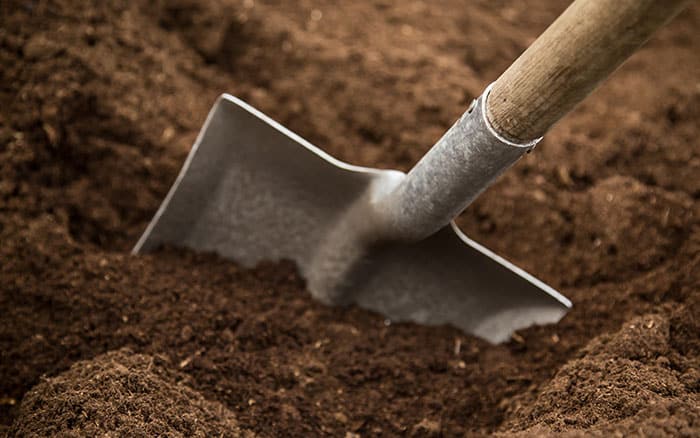Hollies take on a particularly important significance for the forthcoming festivities at this time of year. With their red berries which provide food for birds, and the shiny evergreen leaves offering shelter for wildlife. Here’s a guide to growing holly in the garden.
Bringing holly stems into the home was said to bring good luck and protection to the homeowner. Holly is easy to grow and doesn’t mind being planted in full sun or part shade, as long as the soil is moist but not waterlogged.
Hollies can be clipped into formal shapes as well as left to grow loose and wild. They also make great, burglar deterrent hedges.
Our native holly is called Ilex aquifolium, meaning plant with leaves that are pointed or prickly. This is the holly with dark, shiny, evergreen leaves and red berries during early winter. Just remember that, if you want berries, you’ll need both a male and a female plant. So, how can you tell which is which? The males have much more prominent stamens than the females. If you’re unsure, ask the staff at your local garden centre to make sure you have one of each.
Planting and growing holly
There are many different looking different types of holly available to buy with lots of different leaf shapes, berries and variegated leaf types. Winter is the ideal time to plant them. Simply dig a large hole and add peat-free garden compost. Then plant the holly, positioning it to make sure it’s the same level as it was in the pot. Back fill and firm down the compost gently around the base of the holly.
One thing to bear in mind is that holly plants dislike their roots being exposed to the air. Therefore, it’s best to dig the hole and add the compost before you take the holly out of its container to plant it immediately. If for any reason that’s not possible then, either put the holly back in the pot, or wrap the roots in an old compost bag or something similar.

Types to try
Ilex aquifolium ‘Argentea Marginata’
First is a very handsome looking spiny green leaf variety with silver-cream edges which are tinted pink when young. It’s a female, producing lots of bright red berries from autumn until early winter, growing into a lovely pyramidal shape. It’s a good choice for coastal or urban sites as it copes well with pollution and salt laden air.
- Flowers in spring
- Fully hardy
- Grows to 15m tall
- Moist but well-drained or well-drained soil
- Full sun or partial shade
- Exposed or sheltered

Ilex aquifolium ‘Hascombensis’
This slow growing holly has small, pointed leaves and is ideal for those with smaller gardens as it grows well in a container. The flowers that bloom in spring and summer are great for pollinators.
- Flowers in spring and summer
- Fully hardy
- Grows to 2.5m tall
- Moist but well-drained or well-drained soil
- Full sun or partial shade
- Exposed or sheltered
Ilex x altaclerensis ‘Golden King’
Another compact variety, ‘Golden King’, despite its name, is actually a female variety. Its rounded leaves are exceedingly pretty, with golden edges, and produces red berries from autumn until mid-winter.
- Flowers in spring and summer
- Fully hardy
- Grows to 8m tall
- Moist but well-drained or well-drained soil
- Full sun or partial shade
- Exposed or sheltered

Ilex aquifolium ‘Silver Queen’
This holly is the exact opposite to ‘Golden King’ in that, despite its name, it’s actually a male. Although it doesn’t produce berries, it’s a great choice if you’re looking for a silver edged leaf variety. An additional attraction are its young foliage and stems, as both are purple.
- Flowers in spring
- Fully hardy
- Grows to 8m tall
- Moist but well-drained or well-drained soil
- Full sun or partial shade
- Exposed or sheltered

Ilex x altaclerensis ‘Belgica Aurea’
If you’re looking for a quick growing holly then this female, variegated leaf variety is a great choice. There’s plenty to offer with the leaves that are edged with bright yellow. Then, come spring the small white flowers bloom, followed by red berries. They are a fantastic architectural addition to the garden.
- Flowers in spring
- Fully hardy
- Grows to 12m tall
- Moist but well-drained or well-drained soil
- Full sun
- Exposed or sheltered

Grow your own
Seed
Now is the perfect time to experiment, before the birds take all the berries.
Remove the outer fleshy covering from a holly berry and rinse in a fine mesh sieve which should reveal the seeds. Sow the seeds in a peat-free multi-purpose compost and leave the pots outside as the seeds need a period of cold to trigger germination.
Hardwood cuttings
If the birds get to the berries before you, another good way to propagate and grow your own holly is to take hardwood cuttings. This can be done from November until February.
It’s a super simple process. First, cut pencil-thick width stems using secateurs; prune the top diagonally, just above a bud, and the bottom horizontally, just below a bud, leaving around 20cm length in between.
Place the cuttings into a multi-purpose compost filled pot, pushing about half their length into the pot. Then, leave them outside, ideally in a cold frame. However, if you don’t have that, a sheltered spot will do just as well.
You’ll need to be patient though. They’ll take about a year before they’re ready to be moved but, if you keep them regularly watered, you should see shoots starting to appear by next spring.
If you’re taking cuttings to grow enough holly to create a hedge, then a great space-saving way to do this is to dig a narrow trench in a sheltered spot. Put some horticultural sand along the bottom of the trench, and then place the cuttings all the way along it, spread out at about 5cm apart.


Leave A Comment